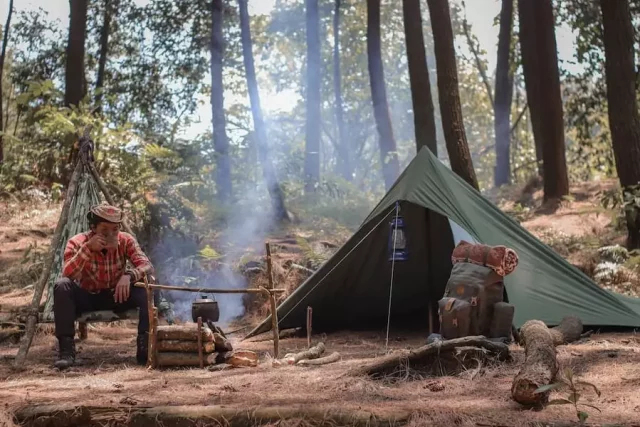Forests are good for the environment and your health. According to one study, people who spend more time in green spaces like forests are least likely to develop chronic health conditions and mental disorders. Consequently, more people participate in forest activities like hiking, picnics, cycling, nature journaling, and backpacking.
However, forest excursions can turn into an odyssey when you wander from the designated
trail or get trapped by bad weather. According to one report, individuals who survive getting
lost in the forest are those who can find warmth, shelter, and drinking water. Below are tips to
help you survive a forest trip.
1. Carry A Survival Subscription Box
A survival subscription box is a must-have for any outdoor adventurer, regardless of whether you are a survivalist prepper. Survival box subscriptions are services offered by companies within the outdoor and survival niches to preppers and consumers seeking emergency tools. The top-rated survival subscription box brands offer different packages with high-quality
curated safety items. Each subscription package caters to specific audiences. The most basic
subscription packages typically feature simple items like everyday carry (EDC) tools, outdoor
survival manuals, fire starter kits, flashlights, and dried foodstuff.
On the other hand, more advanced subscription boxes feature more advanced emergency
supplies. Such supplies include premium first aid kits, tactical backpacks, multi-tools, self-
defense items like stunt guns, tactical knives, pepper sprays, navigation gear, and sleeping gear.
Top-rated survival subscription box service providers curate their packages with items from top tactical and survival brands tested by professionals. The report referenced above on individuals getting lost in the forest established that most
survivors had gear that helped them access warmth, shelter, food, and water. Moreover, the report also showed that day hikers who are unlikely to be carrying outdoor essentials are more likely not to survive being lost in the forest.
Therefore, consider subscribing to a reputable outdoor subscription box service and create a
stockpile of essential outdoor utilities. Second, pack the essentials when going out into the
forest so you are ready for any eventualities. Third, always have the tools and gear on your
person so you can readily access them when you are in a precarious situation while touring the forest.
2. Learn How To Start A Fire
Knowing how to light a fire is an invaluable skill that will help you survive in the wild. Camping
fires improve visibility, especially when lost at night and keep predators at bay. Second, a
campfire will keep you warm and protect you from developing hypothermia from bad weather.
Therefore, you can follow the simple tips below to start a campfire in the forest. First, always
collect dry grass and twigs while on the forest trail and keep them on your person so you can
access them regardless of the weather.
Second, find a safe space to make the fire away from dry brush but close to wind blocks. Clear
the area and make a fire with the dry grass and twigs before adding large pieces of wood to
sustain the fire. The fire starter kit from your survival subscription box is handy.
3. Set Up Shelter
Besides a fire, decent shelter is vital in keeping you warm, preventing your body from losing
more heat than it can generate. Second, shelter protects you from the sweltering heat that can
cause dehydration or a heat stroke. Third, staying at a single location when lost in the wilderness makes it easier for search and rescue operators to find you.
Therefore, find an ideal location to set up your shelter. If you have your camping gear like tents on your person, use it to set up shelter next to your campfire. Alternatively, you can create a
survivalist shelter by fastening leafy branches to a tree. However, ensure you set up the shelter on level ground and away from water bodies to avoid animal attacks.
4. Collect Drinking Water
Forest outdoor activities are energy-intensive and require access to a constant water supply to
help restore electrolyte levels and prevent dehydration. According to one literature review,
electrolyte balance is essential for muscle contraction; muscle contractions support posture,
stability, and movement.
Therefore, find a drinkable water source near you to prevent dehydration; dehydration has
significantly more dire effects than hunger. You can search for nearby puddles, streams,
waterfalls, marshes, and other water bodies. Consider making water drinkable by boiling it and letting it cool before proceeding to drink.
5. Forage For Food
Foraging is a vital survival skill, helping you identify and utilize available nutrient sources to
maintain energy levels. Therefore, consider learning basics foraging like plants that are safe to
consume and their nutritional value.
Second, foraging skills will help you to stay safe by avoiding poisonous plants. Also, besides
plants, you can forage insects as a tasty, protein-rich alternative.
6. Learn How To Make Natural Insect Repellents
Insect bites can cause painful sores or spread diseases like malaria from mosquitoes. Falling sick
while in the wild lowers your chances of survival. Therefore, learn how to repel insects naturally using wild insect-repellent plants or mud masks.
Conclusion
Although forests present no imminent danger, the survival tips above are handy in ensuring
your safety. Therefore, consider practicing the information above in preparation for your next
forest adventure.














